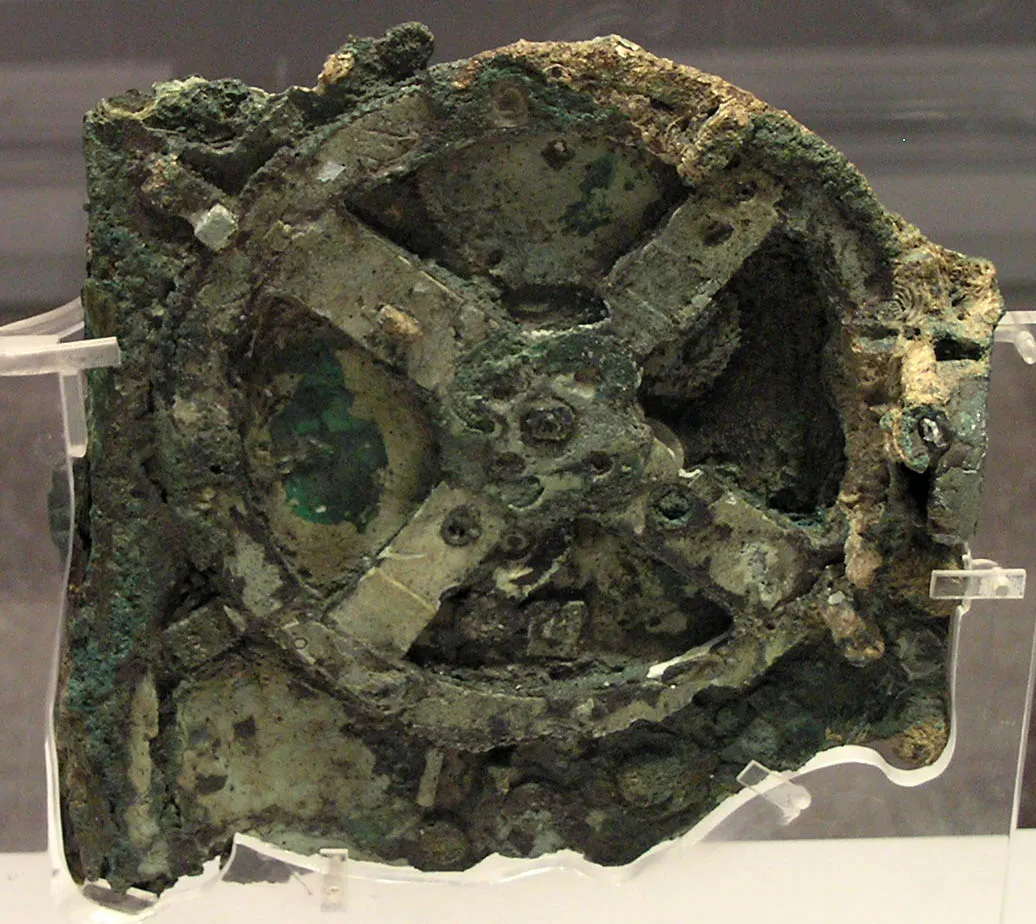Scientists May Have Discovered How the Ancient Greeks’ ‘First Computer’ Tracked the Cosmos
Researchers proposed a new theoretical model for the Antikythera Mechanism, a 2,000-year-old device used to chart the universe
/https://tf-cmsv2-smithsonianmag-media.s3.amazonaws.com/filer/68/68/6868fe6f-aebd-4fc0-a0f2-239ef8f2255b/explodedcosmosmodel8x5.jpeg)
First discovered by divers in a Roman-era shipwreck in 1901, researchers have puzzled over the extraordinary Antikythera mechanism for decades. The hand-held device dates back 2,000 years and predicted astronomical events, such as the movement of the planets and lunar and solar eclipses, for its ancient Greek users. Its stunningly sophisticated design has led many researchers to dub the invention the world’s “first analog computer.”
Yet how exactly the mechanism might have worked is still up for debate—especially because the ancient device has only survived in 82 discombobulated, partially disintegrated fragments. Last week, a team of researchers from the University College London (UCL) proposed a major step forward: a theoretical model for how the front part of the mechanism, which displayed the ancient Greek order of the universe, might have worked.
Writing in the journal Scientific Reports, lead researcher Tony Freeth and his team set forth a solution to the “complex 3-D puzzle” of the mechanism’s design, drawing on “combining cycles from Babylonian astronomy, mathematics from Plato’s Academy and ancient Greek astronomical theories” to propose a plausible scheme for the front of the mechanism.
“Ours is the first model that conforms to all the physical evidence and matches the descriptions in the scientific inscriptions engraved on the Mechanism itself,” Freeth says in a UCL statement. “The Sun, Moon and planets are displayed in an impressive tour de force of ancient Greek brilliance.”

The device, discovered off the coast of the Greek island of Antikythera, was once composed of more than 30 interlocking bronze gears that predicted the phases of the moon, eclipses, the dates of the Olympics and the movement of planets and stars. The design reflected an ancient Greek understanding of the universe, with the Earth at its center, Becky Ferreira reports for Vice.
As Jo Marchant reported for Smithsonian magazine in 2015, the mechanism was similar in size to a mantel clock and was once housed in a wooden case. Its circular, clock-like face boasted rotating, bejeweled hands that depicted the movement of planetary objects. Users would wind the hands with a knob or handle on its side.
As Ian Sample reports for the Guardian, researchers suspect that the device numbered among the items on a merchant ship that was sunk in a storm in the first century B.C., en route to Rome from Asia Minor. Other scientists, such as the London Science Museum’s Michael Wright, have attempted to create models of the Antikythera mechanism in the past, per the Guardian, but its derelict state has made the process a difficult one.
UCL researchers relied on key previous studies to create their model. A 2006 study, also led by Freeth, had discovered never-seen-before inscriptions on the model’s surface that amounted to a “user’s guide to the mechanism,” per Vice.
Another 2016 study revealed inscriptions on the device’s front cover that reference 462 years and 442 years, which are the ancient Greek calculations for the synodic periods of Venus and Saturn, respectively. Because the Greeks believed that Earth was at the center of the solar system, they tracked the amount of time that it took for planets to return to the same position in the night sky. To accord with their geocentric theories, ancient astronomers theorized that the planets moved in complicated ways, sometimes enacting a sort of loop-de-loop to end up in the spots that ancient astronomers observed, reports Vice.
However, the researchers don’t yet know if their model would have been feasible, given ancient Greek technology at the time of the mechanism’s creation. Their proposed arrangement of nestled, hollow tubes would have needed to fit within a space only 25 millimeters deep, reports the Guardian.
“The concentric tubes at the core of the planetarium are where my faith in Greek tech falters, and where the model might also falter,” study co-author Adam Wojcik, a UCL mechanical engineer, tells the Guardian. A modern manufacturer would use lathes to carve the metal in precise, small shapes, but ancient Greek designers did not have that luxury, he adds.
The team is now working to see if they can faithfully recreate their model in real life, using methods available to ancient Greeks.
“Unless it's from outer space, we have to find a way in which the Greeks could have made it,” Wojcik tells Vice. “That's the next stage and the exciting bit is, I think that’s the final piece of the jigsaw.”
/https://tf-cmsv2-smithsonianmag-media.s3.amazonaws.com/accounts/headshot/nora.png)
/https://tf-cmsv2-smithsonianmag-media.s3.amazonaws.com/accounts/headshot/nora.png)